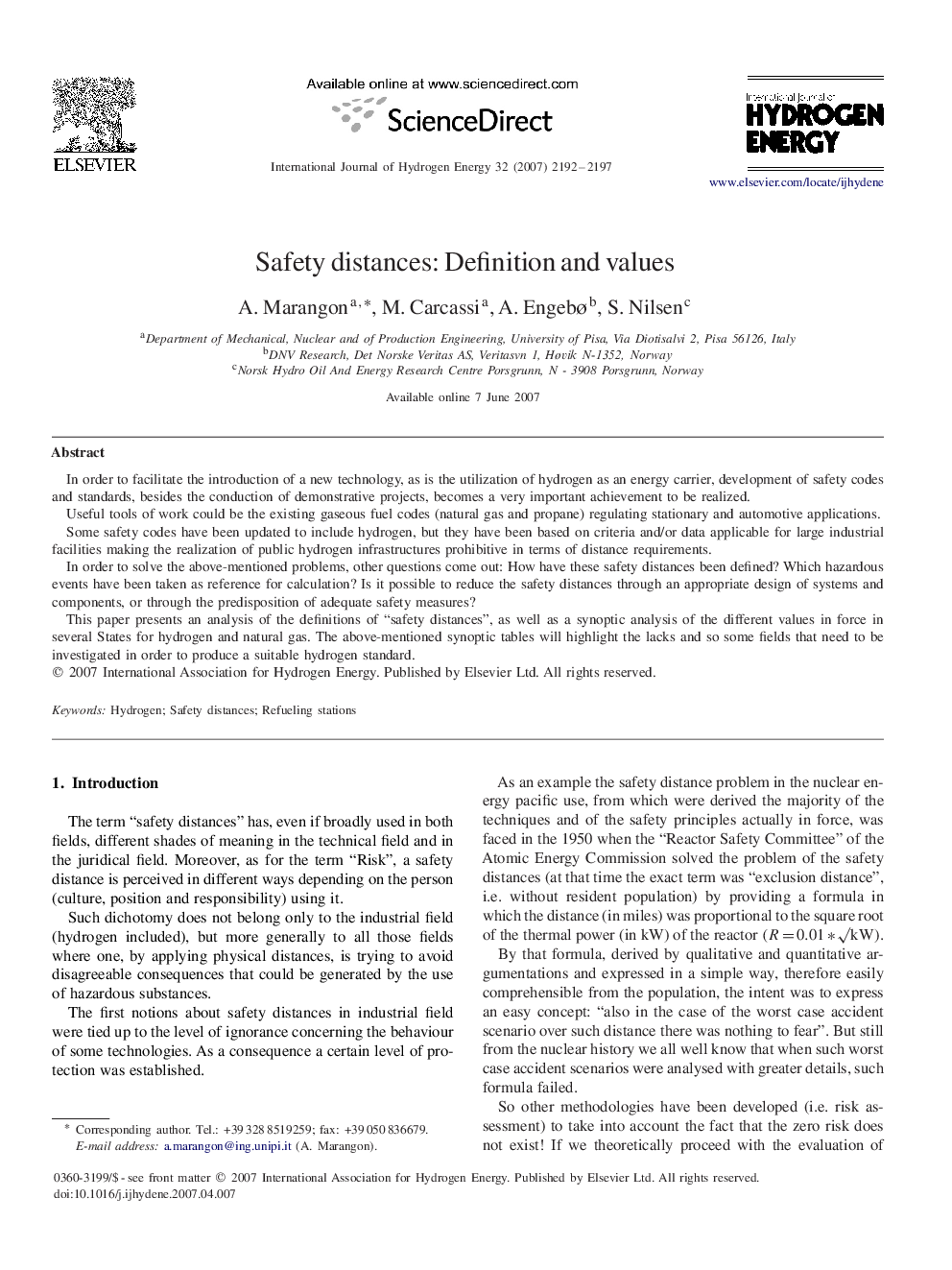| کد مقاله | کد نشریه | سال انتشار | مقاله انگلیسی | نسخه تمام متن |
|---|---|---|---|---|
| 1280320 | 1497671 | 2007 | 6 صفحه PDF | دانلود رایگان |

In order to facilitate the introduction of a new technology, as is the utilization of hydrogen as an energy carrier, development of safety codes and standards, besides the conduction of demonstrative projects, becomes a very important achievement to be realized.Useful tools of work could be the existing gaseous fuel codes (natural gas and propane) regulating stationary and automotive applications.Some safety codes have been updated to include hydrogen, but they have been based on criteria and/or data applicable for large industrial facilities making the realization of public hydrogen infrastructures prohibitive in terms of distance requirements.In order to solve the above-mentioned problems, other questions come out: How have these safety distances been defined? Which hazardous events have been taken as reference for calculation? Is it possible to reduce the safety distances through an appropriate design of systems and components, or through the predisposition of adequate safety measures?This paper presents an analysis of the definitions of “safety distances”, as well as a synoptic analysis of the different values in force in several States for hydrogen and natural gas. The above-mentioned synoptic tables will highlight the lacks and so some fields that need to be investigated in order to produce a suitable hydrogen standard.
Journal: International Journal of Hydrogen Energy - Volume 32, Issue 13, September 2007, Pages 2192–2197